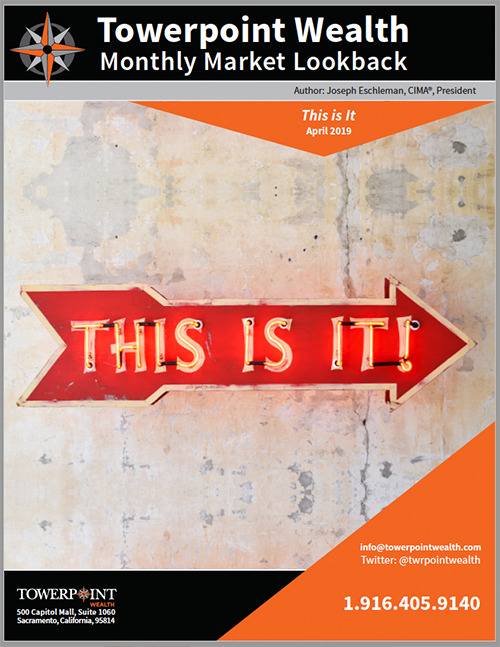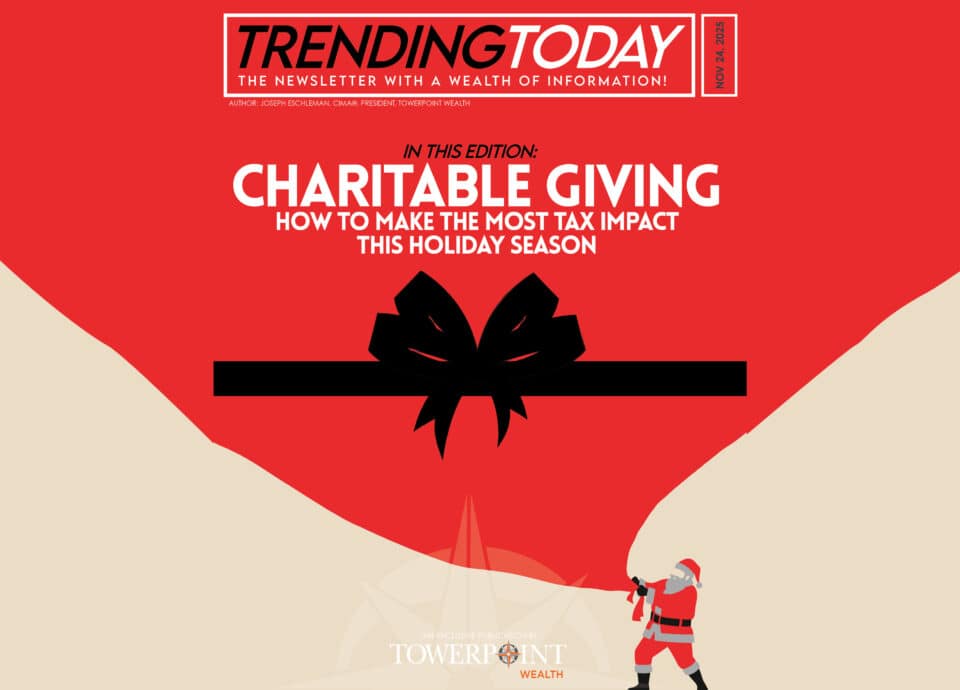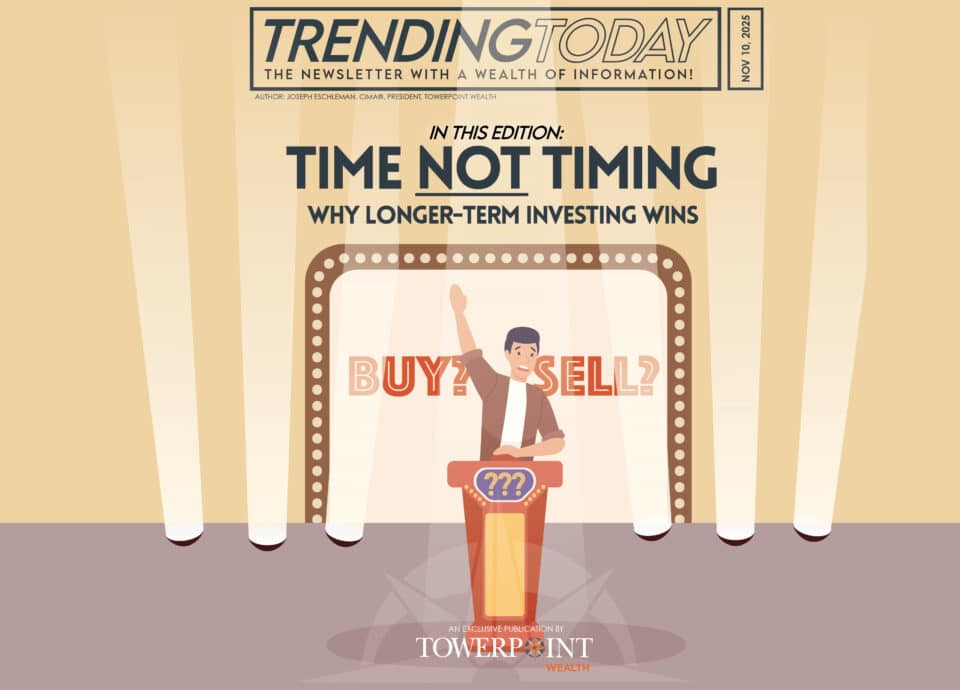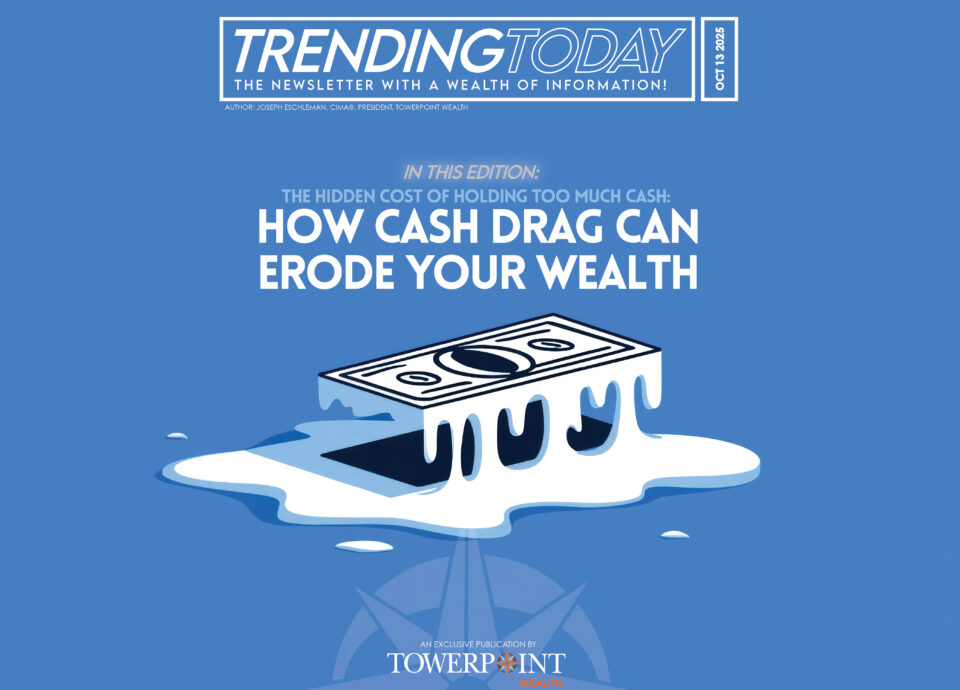This is It
There’ve been times in my life, I’ve been wonderin’ why
Still, somehow I believed we’d always survive Now, I’m not so sure
You’re waiting here, one good reason to try
But, what more can I say? What’s left to provide?
You think that maybe it’s over, Only if you want it to be
Are you gonna wait for a sign, your miracle? Stand up and fight
This is it
Make no mistake where you are This is it
Your back’s to the corner This is it
Don’t be a fool anymore This is it
The waiting is over
No, don’t you run No way to hide
No time for wonderin’ why
It’s here, the moment is now, about to decide
(From “This is It”, by Kenny Loggins and Michael McDonald, 1979)
Why does the back of our neck itch right now? The economy seems to be doing fine, the stock market is booming, earnings are solid, inflation is non-existent, interest rates remain low, and global central banks remain accommodative.
All of the “signals” we’ve been focusing on in the past several months remain solidly “in the green”. So why are we apprehensive? Perhaps we shouldn’t be, and simply are falling prey to our inner “Chicken Little” who always thinks the sky is falling. We’ve been guilty of that before.
We think complacency is the root of our itch. Market volatility once again has become somnambulant, with the VIX trading below 15% since February (the historical norm is closer to 20%). The markets seemingly are ignoring geopolitical issues (trade tensions, Brexit, Italy, France, North Korea, etc.) and are trading in a very
“Candide-ish” manner (“All is for the best in this the best of all possible worlds”). Nothing is moving the needle.
And that’s what’s bugging us. Nothing is moving the needle – the markets just keep trading higher. We hated the days when market movement revolved around Fed policy announcements
– when bad news was good news because the Fed would ride to the rescue – but we seem to be back in that mode.
Please don’t misunderstand – there is a lot to like about the global economy and corporate earnings right now. Frankly, we would be positively giddy if the rest of the world wasn’t in that same state already. We are reminded of Bob Farrell’s “10 Rules for Investing”:
- Markets tend to return to the mean over time
- Excesses in one direction will lead to an opposite excess in the other direction
- There are no new eras — excesses are never permanent
- Exponential rapidly rising or falling markets usually go further than you think, but they do not correct by going sideways
- The public buys the most at the top and the least at the bottom
- Fear and greed are stronger than long-term resolve
- Markets are strongest when they are broad and weakest when they narrow to a handful of blue-chip names
- Bear markets have three stages — sharp down, reflexive rebound and a drawn-out fundamental downtrend
- When all the experts and forecasts agree — something else is going to happen
- (emphasis added)
- Bull markets are more fun than bear markets
With that as a backdrop, looking out over the current economic and investment landscapes, here is what we see.
The Current Economic & Market Landscape
The global economy is still expanding, though slowly:
- The first estimate of Q1 GDP growth in the US is a whopping 3.2%, much higher than earlier expectations. A fair amount of this was due to inventory growth, which suggests lower growth in the future as the inventories are sold off (source: Bureau of Economic Analysis). We suspect future estimates of Q1 growth will show lower but still positive growth. Growth estimates for all of 2019 remain in the 2.0% — 2.5% range (source: The Wall Street Journal);
- Ongoing trade negotiations and additional fiscal and / or monetary stimulus could change the economic outlook for the US over the course of the year. Specifically, US / China trade talks seem to be progressing (though our expectations are muted), and the table seems to have been set for a massive ($2 trillion) infrastructure project in the US. There are no details yet, no final agreement, and no suggestions as to how a deal of this magnitude might be paid for;
- Both the US manufacturing and services sectors remain in expansionary mode (52.8 in April and 56.1 in March, respectively; any reading above 50 is considered expansionary) (source: Institute for Supply Management);
- The federal debt and deficit are exploding and any infrastructure project will balloon these numbers, but neither political party is the least bit interested in addressing the issue – it is all about spending, all the time. There is no spending discipline in Washington, DC right now. This may be good for the current economy, but the piper will be paid;
- Inflation is nowhere to be seen and there seems to be an insatiable demand for US Treasury paper. Both of these factors are keeping longer-term interest rates very low;
- The Fed is in a bit of a “pickle” – high economic growth and low unemployment might suggest a “tightening” stance, but inflation is non-existent (for now), and the markets would probably react violently to a rate hike. We anticipate no movement – either higher or lower – from the Fed for the remainder of this year;
- The employment picture in the US remains robust, and wage increases are finally showing up – not commensurate with the low levels of unemployment and not enough to spark inflation (yet), but workers definitely are making more money, across almost all industry sectors;
- As we wade through the heart of Q1 earnings season in the US, both the revenue and earnings “beat rates” are positive and generally in line with historical averages;
- The primary threats to continued economic expansion remain trade policy negotiations with China and ongoing political turmoil in Europe (Brexit, Italy, France, and Germany);
- With little movement expected from the Fed, low inflation, and (perhaps) a slowing economy, there is little upward pressure on interest rates;
- We maintain our outlook, however, that rates in the US generally will inch steadily higher, with periodic reversals during market disruptions;
- The yield curve remains very flat, although it has steepened slightly from previous months, but the long end remains “tamped down” by high demand for US Treasuries and a lack of inflation fears;
- Through the end of April, there is only ~21 basis points difference between the yield on the 2-year and 10-year Treasury – this is incredibly flat but actually represents a slight steepening from previous months;
- We maintain our position that we do not fear an inverted yield curve – should one occur, we believe it will be because of investment flows and, even should it be a harbinger of recession, we will have 12-18 months of “lead time”;
- Contrary to our expectations, the US dollar has strengthened over the past few months. We attribute this to the “cleanest dirty shirt” syndrome – despite the relatively dovish tone of the Fed, the US economy is outpacing the rest of the world and investment flows are responding accordingly;
Manufacturing all across the Euro area continues to slip and remains in non- expansionary territory – 47.8 in April, the second lowest reading since April 2013 (source: IHS Markit and TradingEconomics);
- The Euro-area Services Index remains expansionary (52.7 in March), but is decidedly slowing (source: TradingEconomics.com);
- Eurozone unemployment is stable at 7.8%, and remains at its lowest level since 2008 (source: TradingEconomics.com);
- Inflation is a non-issue in Europe, and the ECB has changed course from its planned “tapering” of quantitative easing. Deflation is a bigger risk than out-of-control inflation at this point;
- Japan’s GDP is back in positive territory, but remains sluggish and sensitive to changes in exchange rates. A slowing global economy and a weakening dollar (should it occur) will not help;
- China’s (official) GDP growth in Q4 was 6.4% (annualized), the lowest reported growth rate since the Financial Crisis in 2008;
- The Chinese manufacturing index remains in non-expansionary territory, for the first time since May 2017. There are signs, however, that Chinese fiscal and monetary stimulus is beginning to have a positive effect.
- Should this continue, it will be beneficial to the global economy, especially Europe and other EM countries.
The Towerpoint Wealth Economic & Market Outlook:
- The global economy continues to expand, though there is a deceleration of growth;
- US economic growth, interest rates, inflation, and earnings are all weakening but remain generally expansionary. Wages and input prices are starting to increase, though slowly, and we do not see them as threats (yet) to continued expansion;
- Outside the US, inflation simply is not a problem, due to slow growth and relatively stable input prices (despite the fairly steady rise in oil prices);
- Global central bank policies remain “synchronized” around an easing theme, and this should be beneficial for risk assets;
- Market volatility is low, and we are concerned that “complacency” has set in;
- US valuations are once again steep. We still like EM valuations relative to US valuations (though they are only average relative to their own historical norms);
- The US yield curve remains incredibly flat (there is currently a ~21 bps difference between the 2-year and 10-year yields), as lower longer-term expected growth rates and investment flows combine with only modest inflation expectations to “tamp down” the long-end of the curve;
- The public credit markets continue to look very expensive to us, although investors seem to be fairly compensated for default risk, as corporate balance sheets generally are in very good shape. We remain concerned, however, about high yield liquidity and refinancing risk and the growing level of “covenant lite” bank loans;
- For investors who can access the private markets and handle some degree of illiquidity, we still believe there are better opportunities in the private versus public markets, though investors face compressed premiums versus historical levels, driven by huge investment flows over the past 24-30 months;
- Alternative investments, both Hedge Funds and Liquid Alts, disappointed investors in 2018, and both spaces witnessed extensive investment outflows as a result (as we expected). 2019 so far seems to be a continuation of this trend, although we believe that the current stage of the market cycle suggests the need for lower-correlated investment strategies;
- We believe that real assets, after a nice YTD rally, will more or less stabilize as we move through the remainder of 2019;
- While we generally are constructive on the global economy and overall market potential, investors should not extrapolate now into forever – the market will turn;
- With that in mind, clients need to have their expectations managed as to what a globally diversified portfolio can deliver over a full market cycle.
So, we find ourselves in a bit of a conundrum – most of the market signals remain “green”, and we generally are optimistic about the potential for risk assets over the remainder of 2019.
This is the consensus view and, frankly, that is what gives us pause. “When all the experts and forecasts agree — something else is going to happen”. We are not losing any sleep just yet, but we think there may be some sleepless nights ahead. Pay attention, stay diversified, and keep your investment horizon aligned with your financial plan.




